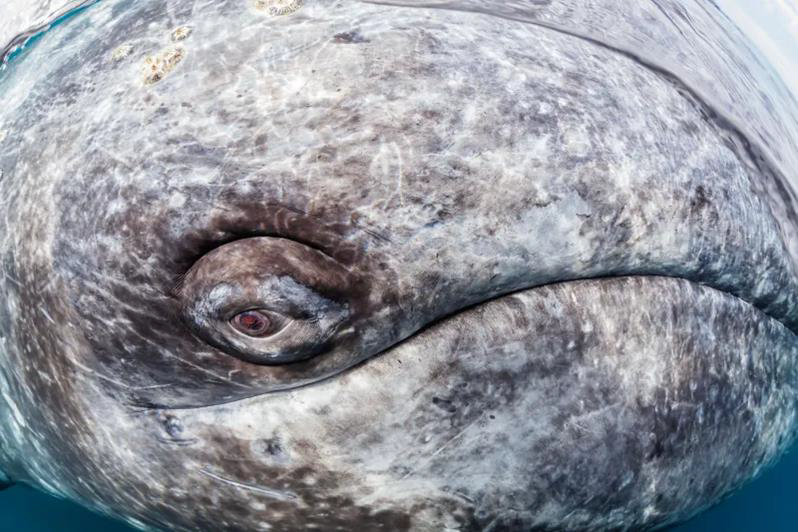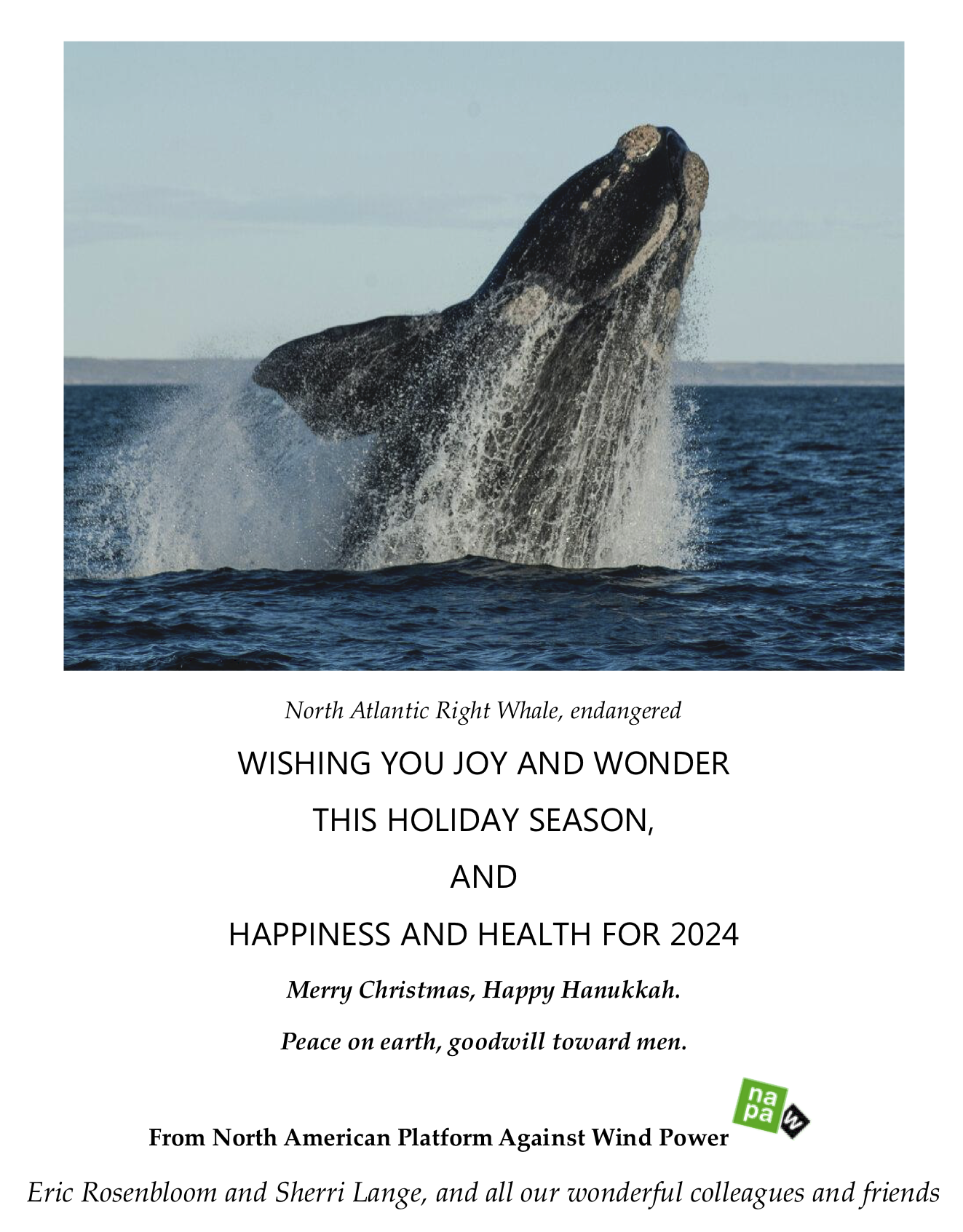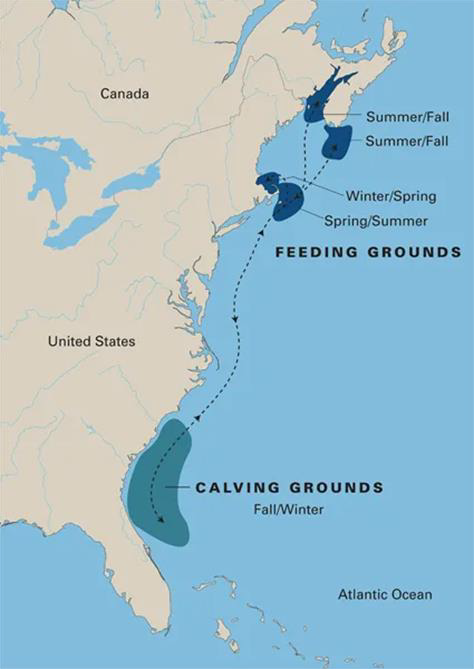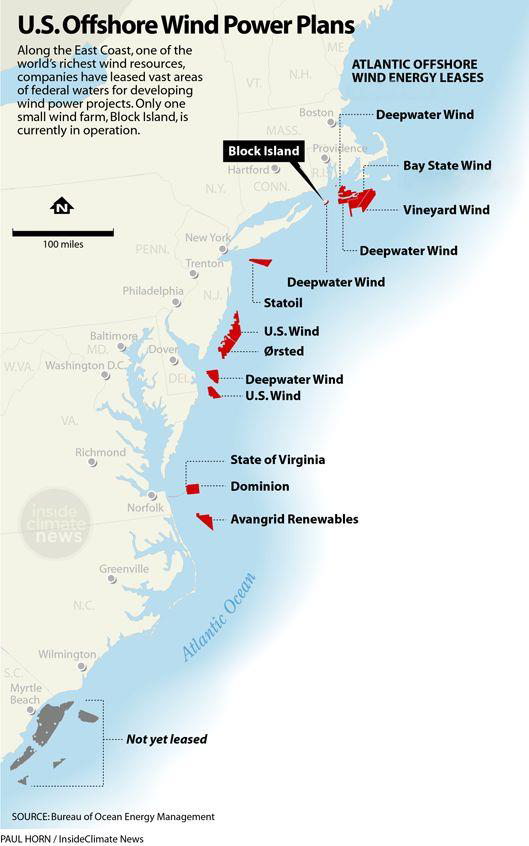Seasons Greetings from NAPAW
Did you know?

There are fewer than 350 North Atlantic Right Whales in existence. Worthy of Protection!
It wasn’t until recently that humans began to see whales as charismatic and intelligent creatures. It was a surreal experience for scientist Roger Payne when he first heard the haunting songs of humpback whales in the 1960s. According to Payne, “That’s what whales do; they give the ocean its voice, and the voice they give it is ethereal and unearthly.” The music industry agreed. In 1970 Roger Payne’s Songs of the Humpback Whale climbed music charts. Soon musicians began incorporating their haunting melodies into mainstream music, a trend that helped change the perception of whales from expendable commodities to charismatic creatures, worthy of protection. Whale song was even included on the Golden Record aboard the Voyager space probes that were launched in 1977.
https://ocean.si.edu/ocean-life/marine-mammals/north-atlantic-right-whale
Listen here to the Voyager Interstellar messages, many languages and whale songs. Here are more questions, offering ideas for protection and recovery. Here is a sample of NARW vocalization off of Martha’s Vineyard.
THIS YEAR: Help all organizations working to save this exquisite mammal from extinction. Say NO to industrial wind, everywhere. Solution: Advocacy, education, grassroots engagement, regulatory change.
Use this interactive map to view actual sightings of NARW and other whales.
A little more relevance to our relationship with whales
https://theworld.org/stories/2014-12-22/how-pop-music-helped-save-whales
In 1970, Judy Collins released Whales and Nightingales. She devoted a portion of the royalties to biologist Roger Payne’s conservation work. Soon after, Capitol Records released Payne’s recordings of humpback whales songs. It’s still the best selling natural sounds album of all time. And just as Payne had hoped, these strange mournful sounds inspired a movement: Save the Whales. By 1972, The United States had banned all whaling and whale products.
George Lipsitz, an American Studies professor at the University of California, Santa Barbara, says the songs of the whales struck a nerve because they were part of a historical moment. The US had just experienced the Kent State Shootings; the Vietnam war seemed like it would never end; Martin Luther King had been killed. Lipsitz says people were questioning the very notions of progress and civilization.
There was a suspicion, he says, “that maybe we learn that meanness and that cruelty by establishing rigid boundaries between the human and the animal, and between culture and nature.” People were asking questions like, “what if human guile cuts us off from essential relations to other species,” he says. “It’s almost like we were each hoping for a kind of magic to conjure a new world into being.”
Today, it seems, that kind of idealism doesn’t exist much anymore. Humpback whales no longer sell the number of records they did back in the 1970s. But these haunting calls continue to intrigue scientists and musicians alike. (Our Note: perhaps this kind of idealism should revive!)
In 2001, whale researcher and musician Lisa Walker went to humpback whale feeding grounds in Alaska. Using an underwater speaker and a microphone, she piped her violin down among the singing whales, captured the results and then created an album called Grooved Whale.
Scientists remain mystified by the whales’ complex songs — what information they convey, why they evolve. Musicians, on the other hand, continue to find their own way of going deep below the surface.”
Thank you! Happy Holidays.




